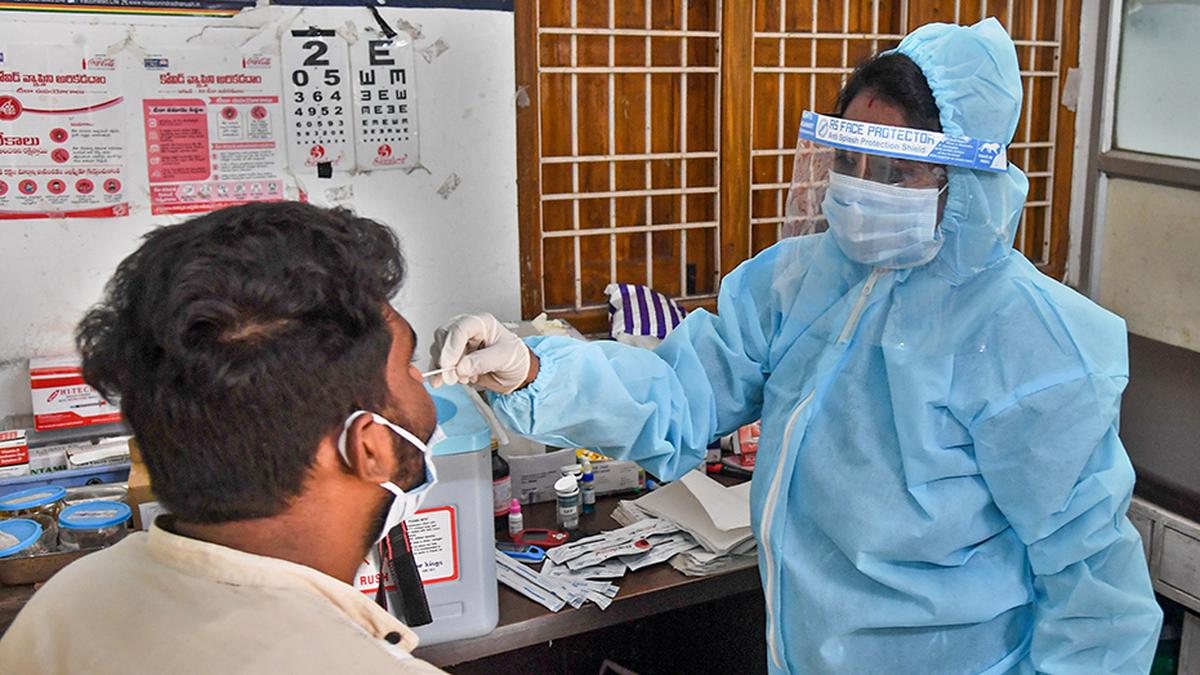
Resurgence of COVID 19 in India – what does it mean? Premium
The Hindu
Authors discuss the impact of COVID-19 waves, variants, and immunity, emphasizing the current Omicron resurgence and implications for public health.
The SARS-Co-V2 that caused the COVID-19 pandemic did immeasurable harm to the world’s population, socially, economically, psychologically. The pandemic continued in waves for about 3 years -- each wave driven by a different variant of the virus.
The first wave in 2020 was caused by the Wuhan virus that caused serious disease with hypoxia, clotting/bleeding problems and relatively moderate mortality. In India it started in March-April, peaked in September and abated by January 2021.
The second wave in 2021 was caused by the Delta variant that spread far more rapidly, producing an even more serious disease. It started in February, peaked in April and retuned to baseline by June. During those months it outran the health services and caused the greatest loss of life.
Memories of our experience, falling ill or watching family members or friends getting admitted in Intensive Care Units in hospitals, our elders dying in isolation, the agonising choice to take or not to take vaccine and which vaccine, lockdowns and school closures etc are still in our minds if not in the conscious level, certainly in the subconscious. Those nightmare memories are being brought forth in recent days, with the news of a resurgence of COVID-19. Electronic media keep reporting the resurgence on a daily basis, as if another wave is imminent. Truth is, no wave can occur, as we analyse the past.
The third wave was caused by the Omicron variant. It started in January 2022, peaked in February and abated in March. The pandemic ended in mid-2022, and thereafter the SARS-CoV-2, exclusively the Omicron variant, has remained everywhere in the world as ‘endemic’ meaning thereby: continuing and constant transmission in very small numbers. We have one more disease-causing virus in circulation than pre-pandemic. Most of us have forgotten the mildness of the third wave disease. The current resurgence is caused by the Omicron sub-variants -- and the anxiety during the first two waves is no longer necessary.
Incessant mutations are a feature of SARS-CoV-2. Most resultant variants are of no consequence but of curiosity for the molecular virologists. Some variants, as indicated by the missing alphabets (Greek) were of public health interest but not of concern. Three variants of Wuhan original – Beta, Delta and Omicron were of concern. The variants of concern had higher transmissibility and the ability to evade immunity than their predecessors that lost out in competition. Thus, Delta eliminated previous variants, and Omicron eliminated the Delta variant.
Infectiousness or transmissibility, can be measured. The average number of individuals infected by one infected person is denoted as the ‘reproduction number’ R. The higher the R, the more infectious the variant, and the faster and greater its spread. The original Wuhan variant had R of ~ 2, Delta had R of ~ 4, Omicron variant had R of ~ 8. The JN1 sub-variant of Omicron is said to have R of ~12 . The current NB.1.8.1 and XFG sub-variants must have even higher R value.













